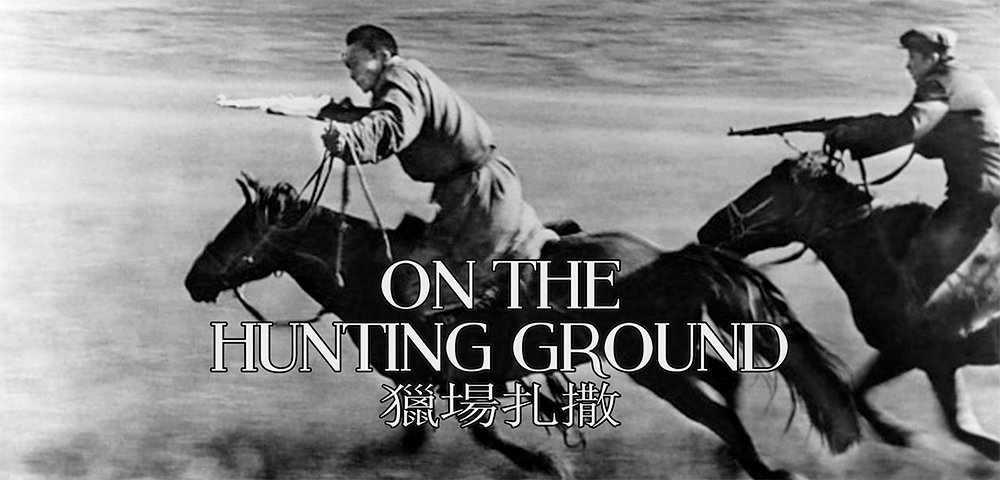
ON THE HUNTING GROUND (獵場扎撒)
dir. Tian Zhuangzhuang, 1984
Inner Mongolia, 76 min
In Mongolic dialect and overdubbed Mandarin with English subtitles
TUESDAY, APRIL 1 – 10 PM
THURSDAY, APRIL 10 – 10 PM
SUNDAY, APRIL 13 – 5 PM
MONDAY, APRIL 28 – 7:30 PM
Join Spectacle for rare screenings of Tian Zhuangzhuang’s groundbreaking and highly controversial early feature. Like many of his “Fifth Generation” contemporaries in China, Tian came up during a politically and socially volatile period, characterized in part by a state-driven effort to foster an image of an ideal socialist citizenry via its cultural institutions. This included the propagation of “national minority films” throughout the 1950s and ’60s which sought to portray interethnic fraternity between the majority Han (upwards of 90% of China’s population) and minority groups like Tibetans, Uyghurs, and Mongols. Often, though, these films pushed an assimilationist agenda, contrasting the “backwardness” of these communities’ traditional customs with Chinese modernity.
Years after these films fell out of fashion, Tian revitalized the concept with a radically different approach. On the Hunting Ground was filmed in Inner Mongolia and features a cast of non-professional local actors. The story is ostensibly about a man who is ostracized for violating a generations-old hunting code, but the plot and dialogue are sparse. Tian instead has a part minimalist, part ethnographic approach, documenting the relationship between the Mongol people, their culture, and their land, irrespective of any state agenda to reconfigure the region’s physical and social environments for its own ends.
The film met controversy prior to its release, condemned by censors and criticized heavily by the Chinese government and cultural traditionalists, arguably contributing to Tian’s eventual blacklisting in 1994. Few Chinese theaters showed the film (supposedly, only four prints were ever sold). However, critics and filmmakers abroad championed On the Hunting Ground, launching Tian to international prominence that sharply contrasted with his domestic perception.
Tian’s work marks a radical break with the aesthetics of earlier generations of Chinese filmmakers. Rather than placing minority peoples within a narrative of liberation accessible to the average Han Chinese viewer, [On the Hunting Ground] emphasizes the relationship between the land and the people. Long shots and long takes dominate; the landscape overpowers any identification with individual characters; dialogue, which is minimal, goes untranslated; rituals and social relationships remain unexplained. The Mongolian steppes—exotic, violent, harsh, and picturesque—become the visual embodiment of an unfathomable part of the Chinese nation, a marker of the limits of an ethnic identity.
These films are not about the plight of a downtrodden “minority” (although the people presented in Tian’s films are indeed poor and sometimes desperate), rather these are films about the liminality of Chinese ethnicity and, by implication, political authority, within its own borders. — Gina Marchetti, Film Reference
